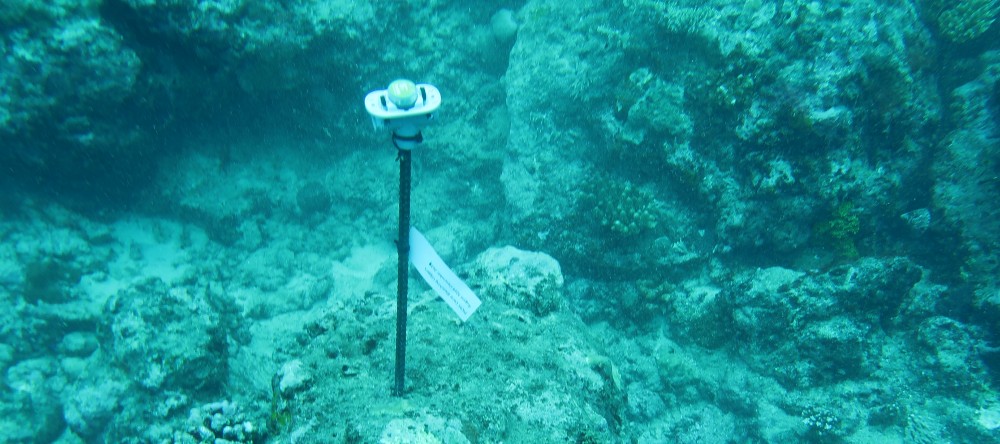- Research
PICRC researchers deploy sensors to monitor conditions leading to a coral bleaching event
Coral reefs are vital to marine ecosystems, providing habitat, food, and protection for countless species. Unfortunately, these underwater environments are increasingly threatened. One of these threats is coral bleaching, which is triggered by rising sea temperatures. Coral bleaching occurs when the microalgae that live inside coral tissues, which give corals their color and energy, are expelled due to stress from elevated water temperatures. Without these algae, corals lose their color, turning white – or “bleached” – and become more vulnerable to disease or overgrowth of turf algae. Although bleached corals are not immediately dead, prolonged bleaching can lead to significant mortality, endangering entire reef ecosystems.
Committed to protecting these essential ecosystems, the Palau International Coral Reef Center (PICRC) is intensifying its monitoring efforts. Between August 7 -9, PICRC researchers deployed 15 temperature and light sensors around Palau from the Northern reef to Peleliu and on both the east and west fore reefs. These sensors will remain deployed until retrieved in December. These sensors are continuously collecting data on water temperature and light levels that will provide researchers with valuable real-time, underwater conditions during a potential coral bleaching event. By linking this real-time data with bleaching surveys, scientists aim to better understand how different factors contribute to coral bleaching and identify which areas of Palau’s reefs are most at risk.
This work, led by PICRC researchers Dr. Piera Biondi and Chief Researcher Ikelau Otto, is part of a collaboration with Dr. Peter Houk from the University of Guam. The data collected this year will allow researchers to compare current conditions with past events, enhancing their ability to predict and respond to future bleaching events, and ensuring timely and effective management actions.
PICRC uses the data and predictions from the National Oceanic and Atmospheric Administration (NOAA) Coral Reef Watch website, which provides real-time updates on thermal stress conditions on coral reefs worldwide. In addition, PICRC relies on observations by both staff during field trips and by community reports. Once a mass bleaching event occurs, PICRC begins an extensive survey effort to survey 80 sites around Palau at two depths to record the extent of the bleaching event. Based on the current conditions as well as coral bleaching events occurring around the world, PICRC is prepared to begin survey efforts.
“Our goal is to continue our critical work in coral reef conservation,” says Geraldine Rengiil, Director of the Research Department at PICRC. “By deploying these sensors, we are not just gathering data; we are reinforcing our commitment to safeguarding our reefs. Understanding the environmental conditions that lead to coral bleaching allows us to take informed actions and preserve the rich biodiversity of our marine ecosystems for future generations.”


